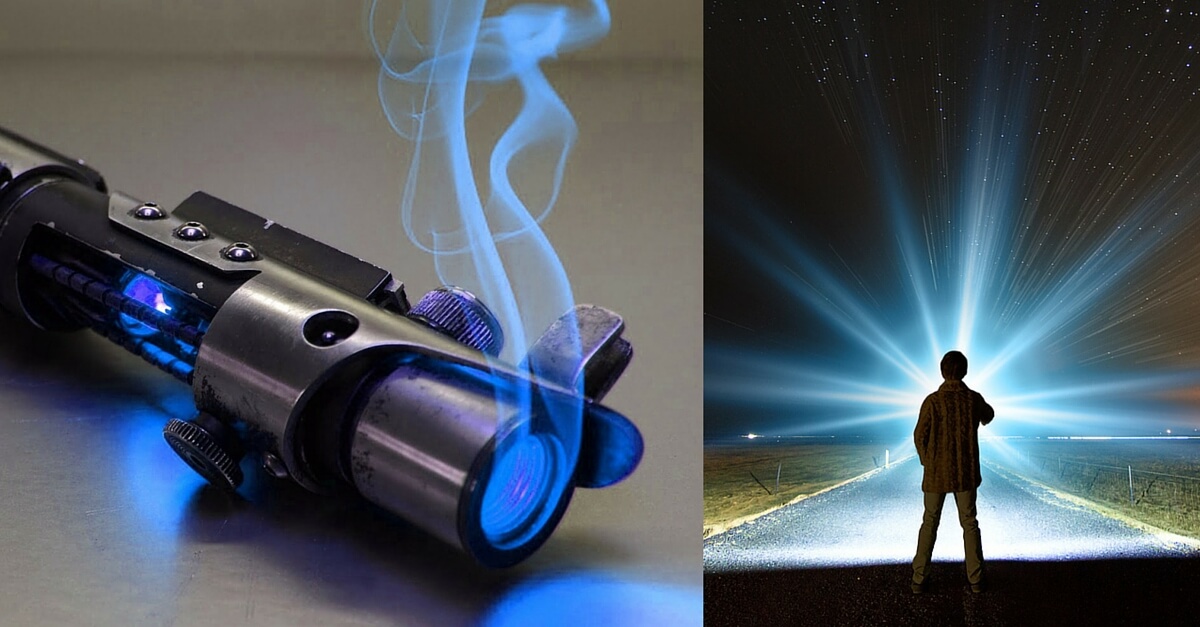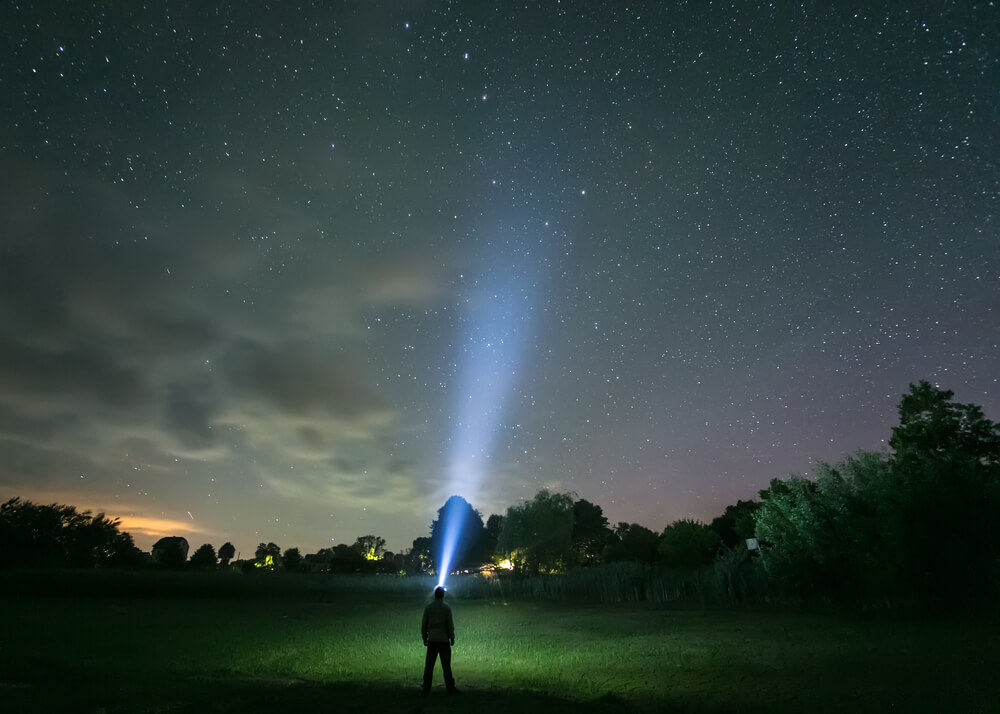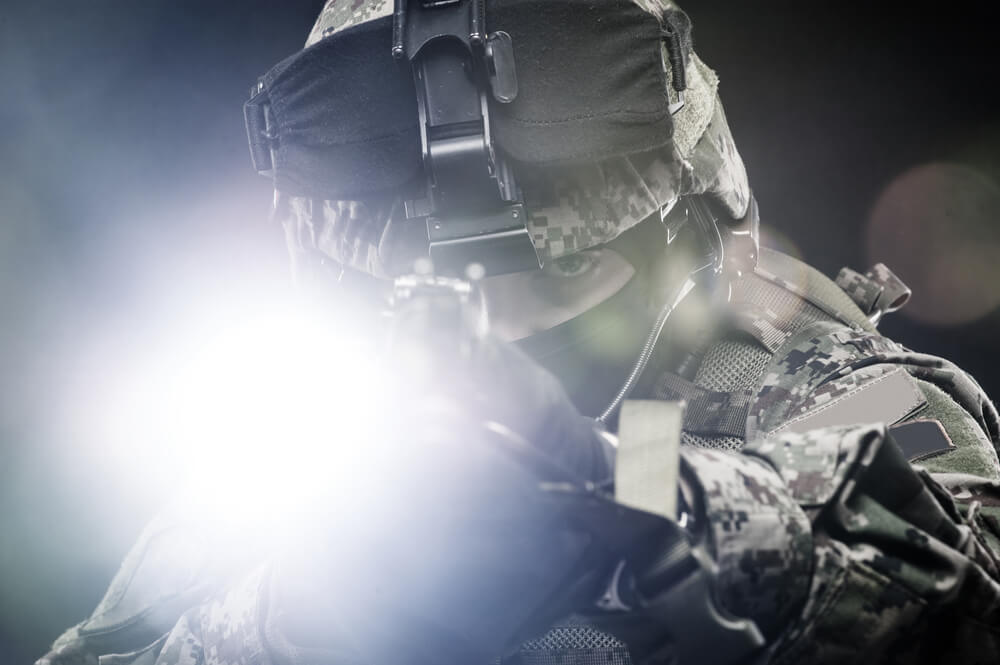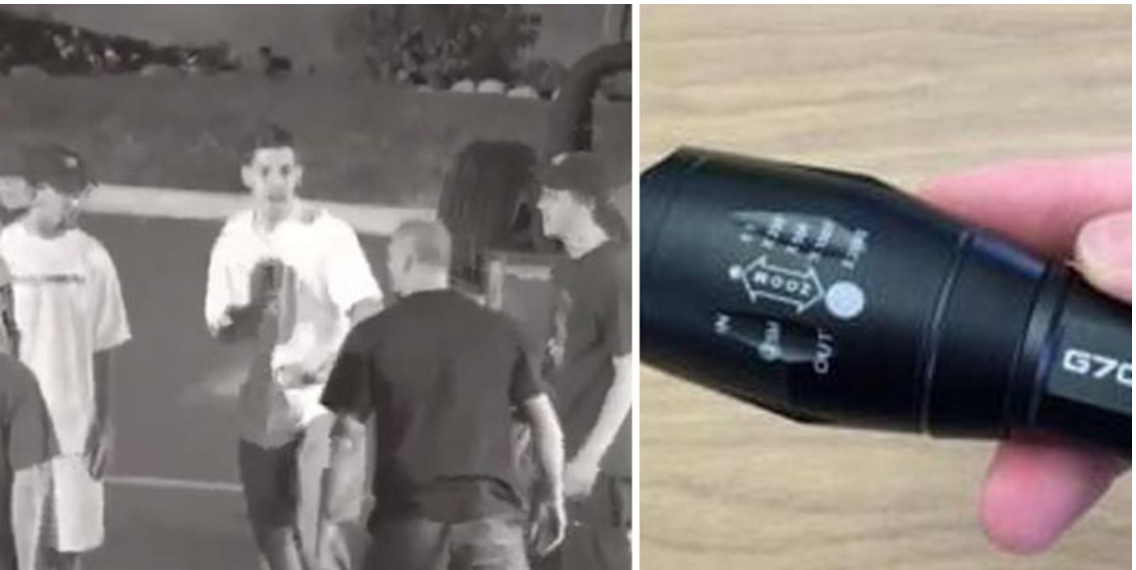
Protect your family! The good news? It just got easier with a Tactical Flashlight. Here’s your guide to keeping your loved ones safe. You got this!
Do you run at night?
How about in the early morning?
If so, protect yourself. Carrying a tactical flashlight with you is always advised, especially when it’s dark. A tactical flashlight is one that is normally used by military or police force. It’s designed to be mounted on a weapon to shoot targets in lowly lit areas. This type of flashlight is extremely handy for the average civilian in moments where self-defense is necessary.
They are smaller than regular flashlights, emit a stronger light and are made of weapon-grade aluminum to be very durable. Just like a pocketknife, the tactical flashlight is compact, yet useful enough to be carried with you regularly. Whether used in the event of a power outage, in your basement to fix some wiring, out on a walk or jog with your dog late at night or in the event of an attack, you’ll always be glad to have your tactical flashlight on you.
According to Mike Seeklander, firearms and tactical trainer with Shooting Performance, everyone should carry a tactical flashlight at all times. Not only can they help identify threats—as attackers oftentimes use darkness to their advantage—but they also can be used as an improvised weapon.
A bright light being shined in the eye of a potential attacker will take them by surprise and momentarily disorient them, allowing you to run away and find safety. In fact, shining that bright light into someone’s eyes will give them momentary blindness for at least three to four seconds, giving you a good head start to hotfoot it to a safe location.
The serrated edge, also called a crenelated or toothed bezel, of your tactical flashlight, is often advertised by flashlight companies as a feature meant to break car windows in case of emergency. What is particularly good about this feature is that you can use it as an improvised striking device.
A solid blow to the head of an attacker with the toothed bezel edge of your tactical flashlight will create a considerable flesh wound. The pain that the attacker will be experiencing, not to mention the momentary blindness created by blood in his eyes, will give you time to make your get away. When traveling by plane, be sure to put it in your checked bag.
Why?
TSA agents can deem it a striking tool.
This Is What To Look For In A Tactical Flashlight
When buying a tactical flashlight, be discerning. Choose one with the features you’ll need. Which features? For starters, make sure it’s small. It shouldn’t be much bigger than the palm of your hand. This ensures ease of carry, and also makes it discreet enough so that a potential attacker won’t notice it in your hand and try to remove it from your person.
It should emit at least 120 lumens of light. Anything less is not bright enough to disorient an attacker, which is an integral element of your escape plan. Go for a simpler model and avoid flashlights that have a strobe or SOS function. These features are often more confusing than helpful, and the last thing you need in the event of an attack is a technological mishap. Keeping it simple will help you seamlessly take advantage of your flashlight when the time is right.
Go for a waterproof model.
Why?
It will work in all weather conditions. Also, find one that is ruggedly constructed with an easy-to-grip machined texture. Find a model composed of hard-anodized aluminum. These are tough, yet light. Finally, opt for a tactical flashlight that has LED bulbs as opposed to incandescent. The bulbs break less easily, can withstand a beating, and are more energy efficient and less easy to burn through.
What Should You Do If Attacked In The Dark?
Should you encounter an attacker in the dark, there is a particular way you should move to properly utilize your tactical flashlight and maximize your safety. One golden rule to proper flashlight self-defense safety is not leaving it on for long periods. This will show your location to an attacker and leave you as an open target.
The attacker will most likely shoot or run at the location where they last saw the light from your flashlight, so use it strategically. First, turn your flashlight on and scan the location, searching for threats. Next, turn off the light and move. Repeat this series of steps until you have either secured your environment or located your threat. By turning your light off and moving, you can remove yourself from the threatening spot that your attacker will now be focused on.
If you are unarmed and you don’t have any combative training, or if you don’t know whether or not your attacker is armed, then your best option is always to flee. If you have to engage the attacker, the most effective way to disorient a threat is to hit him in the face hard with the toothed bezel edge of your flashlight. This will incapacitate them enough for you to get away. Other self-defense measures you can take are low, hard kicks to areas like the groin and knees. With the blinding light coming from your tactical flashlight, they won’t be able to see these coming.
This Is How To Handle Lowly Lit Situations
If you carry a firearm for self-defense, a tactical flashlight can assist in illuminating a threat in lowly lit situations. According to FBI stats, the likelihood of you having to use your firearm in low light is much greater than in daylight.
When using a tactical flashlight in tandem with a firearm, Seeklander recommends using a two-handed approach he calls the “Eye-Index Technique.” This is a modification of a gun/flashlight technique taught to Federal Air Marshals called the “Neck Index.” It is done by holding your tactical flashlight in your non-dominant hand so that the light is by your eye, while having your gun hand extended out. Having the light by your eye illuminates your target and your gun sights, while also providing the extra head protection from having your hand up by your head.
By extending your gun hand out, you provide recoil control. Grip the gun harder than you would if you were using two hands, with a slight bend in your elbow and a relaxed trigger finger. If you want to shine your light on someone who isn’t a threat, such as someone else who also could be in danger from the attacker, bring the gun to your chest in one hand in a high ready position. Keeping the gun close to your body like this will help prevent someone grabbing it from you.
Running In Dimly Lit Times
If you enjoy running at night or early in the morning when natural light is absent, carrying a tactical flashlight on you is one way to ensure better safety. Take extra safety precautions when running during these times.
Why?
Both are statistically the most dangerous times to be running alone. Run in familiar, well-lit areas. Try to find a place that is lit by street lamps. You could also try visiting an outdoor track.
Make sure that you are visible to drivers, cyclists, other runners and pedestrians by wearing reflective or bright clothing or wearing a head lamp. Not only is this important to make sure a motorist doesn’t accidentally strike you, but being visible ensures that others will see you and watch out for your personal safety. In the event that you should become injured or if someone attacks you, it is always good to have other people on your side.
Try to avoid overgrown trails, unpopulated areas, and deserted streets. Also, avoid places with parked cars and bushes where potential attackers may be lurking. For extra safety, run a few different routes at different times throughout the week. Attackers pick up on consistency. Alternating where you go for your workout will help boost variety in your routine and keep you safe from would-be attackers.
Better Safe Than Sorry
According to the Road Runners Club of America, wearing headphones is very distracting because our ears alert us to possible dangers. For this reason, it is advised for your personal safety to ditch the iPod or MP3 player on your next run. This will make you more aware of your surroundings and free up your ears to alert you to possible threats.
You will also want to carry a cell phone with you in case of emergencies, as well as ID and insurance cards in the event that you become injured. There is always safety in numbers, so boost your chances by bringing along a running buddy. If you do run alone, be sure to inform someone of the route you’re running and an estimated time of when you plan to be back. Always keep pepper spray and a tactical flashlight on you in case of an attack, and carry less cash than usual. You might even consider making a decoy wallet.
If someone tries to harass you while you are out on a run, don’t engage him or her when they try to speak to you. Just keep your distance and keep moving. Practice identifying physical characteristics of strangers as well as license plate numbers in the event that you are harassed and save exploring new areas for runs and hikes with friends. If you use all the necessary safety measures yet still find yourself in the face of a threatening situation, practice self-defense measures to keep yourself out of harm.

Use Some Verbal Defense Tricks
Self-defense includes all of the mental, verbal and physical strategies that protect your well being. It’s not just knowing the most effective martial arts moves. Often using your words effectively is enough to protect yourself. Get out of a dangerous situation by using assertive body language and strong verbal skills.
Use your intuition. Trust your senses. And, don’t be afraid to use strong declarative statements. Shouting “Back off!” and “I don’t want to talk to you” are more effective at warding off an attacker than using engaging phrases such as “What do you want?” or “Can you please leave me alone?” Taking an assertive stance off the bat changes the dynamic of the situation and reverses what the perpetrator expects.
These Are The Prime Spots To Strike
Most attackers are looking for the chance to overpower a victim, in particular, female victims, and are not necessarily looking for a fair fight. If possible, always try to run away from a dangerous situation as opposed to immediately reverting to combat. If a physical altercation becomes necessary, aim for vulnerable parts of the attacker’s body such as the eyes, nose, groin, and knees. Also, check out good military workouts as they can aid you in your defense.
The knees are vulnerable, and it doesn’t take much pressure to cause a significant amount of pain and injury, rendering the attacker unable to chase you down. The eyes are always vulnerable, no matter how tough your attacker may seem. The nose can be easily broken, causing the eyes to water and disorient your attacker. A strike to the head from a tactical flashlight will be enough to momentarily immobilize your attacker so that you can make your getaway.
You can learn more where to buy a tactical flashlight here.
Conclusion
Carrying a tactical flashlight is a good self-defense measure, not to mention a convenient light source, for anyone, in particular for those who tend to exercise alone in dimly lit areas. Not only can a tactical flashlight be used to light your surroundings and identify yourself to others, it can also identify possible threats and be used as a striking device in the event of an attack.
Be prepared. Consider buying a tactical flashlight for your loved ones (or yourself) to ensure their safety and give them self-assurance when working out alone in lowly lit areas. Just as necessary as a pocket knife or pepper spray, including a tactical flashlight in your arsenal of self-defense tools could one day prove effective in warding off an attacker—and you’ll be thrilled you bought it.
By Lillian Dumont
Latest posts by Terry M (see all)
- Garage Gyms - Aug 1, 2018
- Kettlebells – Why They Should Be Added To Your Routine. - Jul 24, 2018
- Weight Belts: What Are They Really For? - May 31, 2018












